Any fruits can be made into jelly if you add a box of commercial pectin. The method is foolproof: follow the instructions to the letter and after a 2-minute boil you will have a product of perfect consistency.
But what if your fruit contains natural pectin? You could still go with the commercial pectin method. Or you can try the old-fashioned way—using the right mix of fruit, a longer boil, and your judgement. In other words, you can make jelly like an artisan.
Fruits with natural pectin
So many of our native and backyard fruits contain natural pectin. These include:
- apples—the tart winter varieties, not summer apples
- crab apples
- chokecherries
- Nanking cherries
- gooseberries
- high-bush cranberries
- wild plums
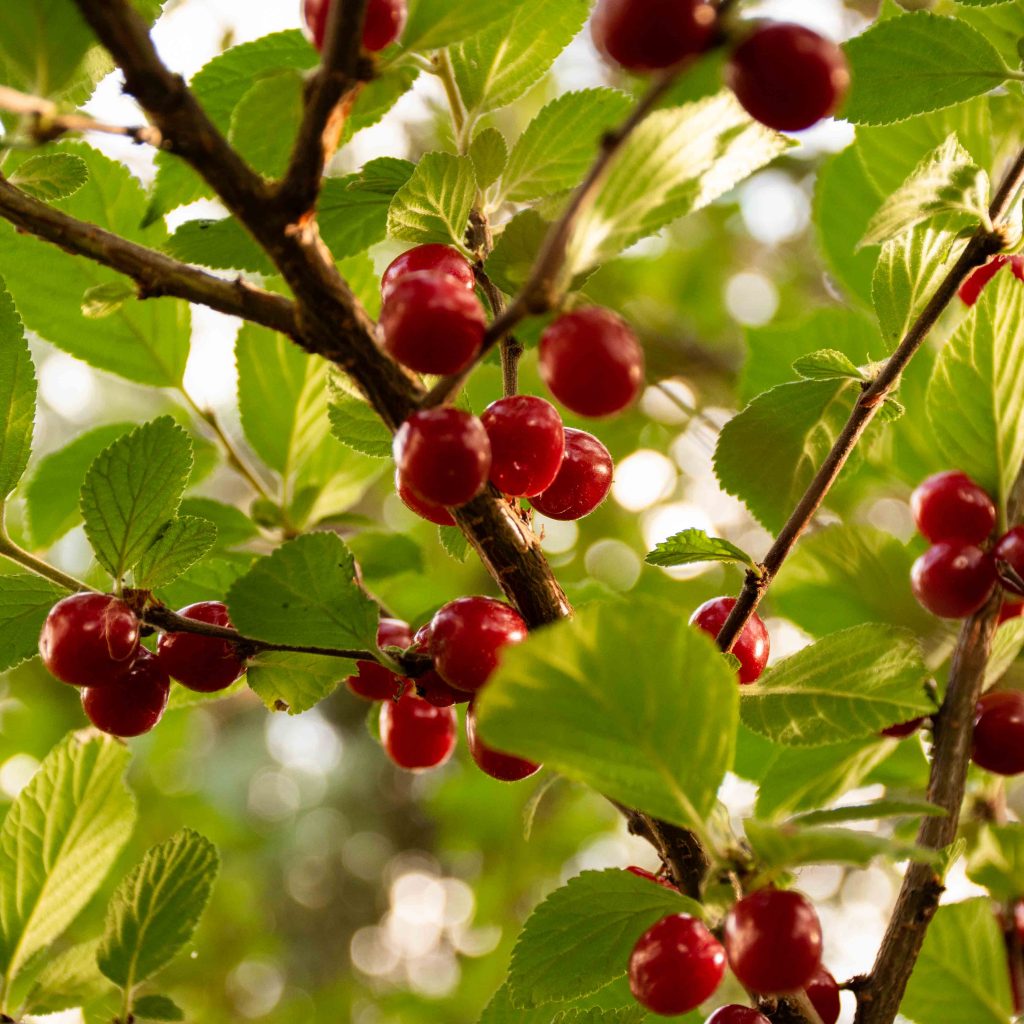
Riper fruits have less pectin and insufficient acid, so avoid using overripe fruits. The recommended mix is ¼ under-ripe fruit and ¾ ripe fruit.
The amount of sugar needed is 3 to 4 cups per 4 cups of juice. The less pectin in the fruit, the less sugar is needed. That’s because there will be more water boiled out. But don’t use less than 3 cups or you may have mold problems.
The acid level is also critical to jelly-making. According to the University of Minnesota Extension, the recommended pH is 3.5, which is the same as 1 teaspoon of lemon juice to 3 tablespoons of water.
How to make jelly
I just finished making a batch of jelly from my Nanking cherry bushes. From a 4-quart bowl of cherries, I extracted six cups of juice.
Here’s how I made it a batch with four cups of juice:
1. Prepare the jars
If you want to preserve the jelly to enjoy months from now, you need to sterilize the jars and lids.
Note: Always use new lids—used lids will not reseal.
Wash the jars and lids and put them in a large pot. Add water to cover and set it to boil. Boil them for at 20 minutes or more and then set to a slow simmer to keep them hot while they wait for the jelly. For each my Nanking cherry jelly batches, which takes 4 cups of juice, I use around 4 jars.
In my setup, I have jar tongs for lifting out the hot jars. The funnel is specially designed for pouring the hot jelly into the jars without spilling.

Funnel and jar tongs 
Pots for sterilizing lids and jars and a pot for cooking the jelly
2. Make the jelly
Into a large pot, pour in 4 cups of juice and add the sugar. I used 3 cups as my cherries were on the riper side. Make sure your pot is at least twice as high as the juice plus sugar or the mixture may boil over.
Set the pot to boil on high heat.
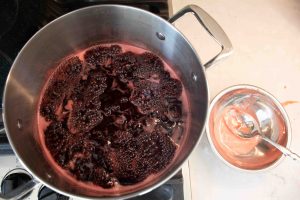
Foam will start to form. Scoop this off with a spoon so that the jelly will be clear. Be careful, because there will be a lot of hot steam at the surface. Or wait until the jelly comes off the heat to skim the foam. As the water evaporates the liquid becomes more syrup-y and more bubbly. Now start testing for doneness by dipping a metal spoon into the liquid and lifting it out. Observe how the liquid slides off the back of the spoon. As it nears the gel stage, it goes from a single-stream drip to a two-stream drip or a sheet.
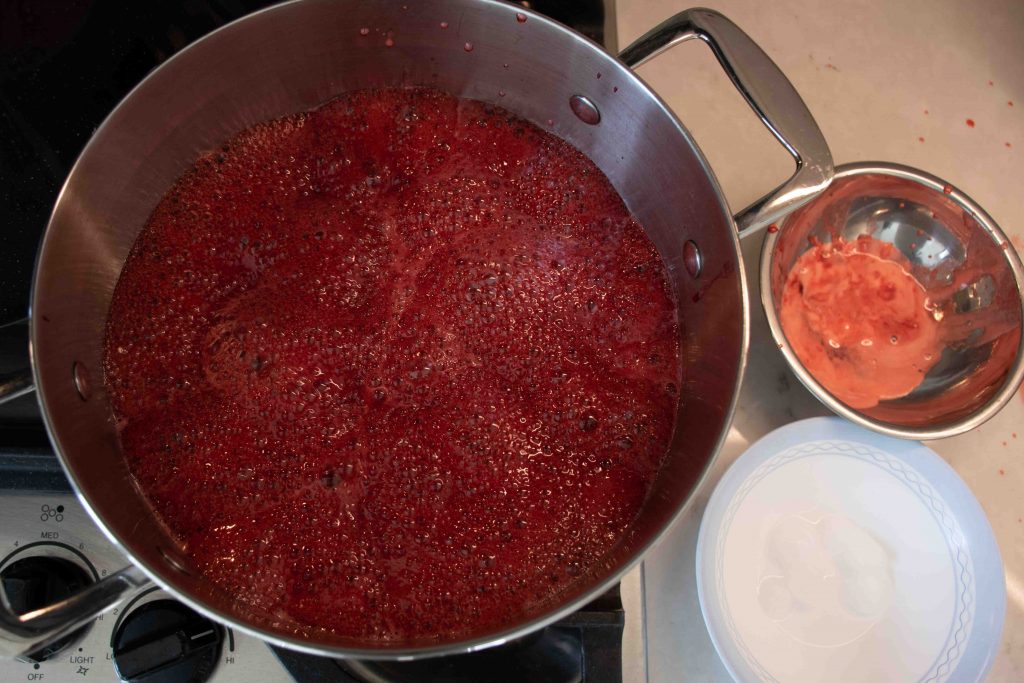
The jelly is bubbling hard 
The jelly is ready when it drips off the spoon in two simultaneous drips
I usually give it a minute longer past this stage, just to make sure.
Remove the pot from the heat.
3. Pour jelly into the jars and seal
This step is all about preserving the jelly so that you can enjoy it over the winter.
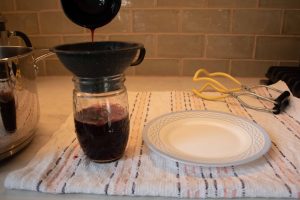
Lift out a jar and set it down near the pot. Fill it with jelly up to about a quarter inch from the top.
Top the jar with a lid and screw on the ring, but not too tightly. You don’t want to squash and ruin the sealing ring on the lid.
After about an hour, you’ll hear the lid “pop” as it’s sucked inward. That’s the sound of a vacuum seal. To confirm the seal, unscrew the ring and lift up the jar by the edges of the lid. If the lid comes off, that jar has to go in the fridge.
Once the jars are cool, tighten the rings again and move the jars to a cool dark place.
More tips for successful jelly-making
Set aside time to do work without distraction. To be on the safe side, start with hour and half if you’re making a single batch and add a half hour for each additional batch.
The University of Minnesota Extension is a good reference for the science of jelly-making and how to test for pectin levels.
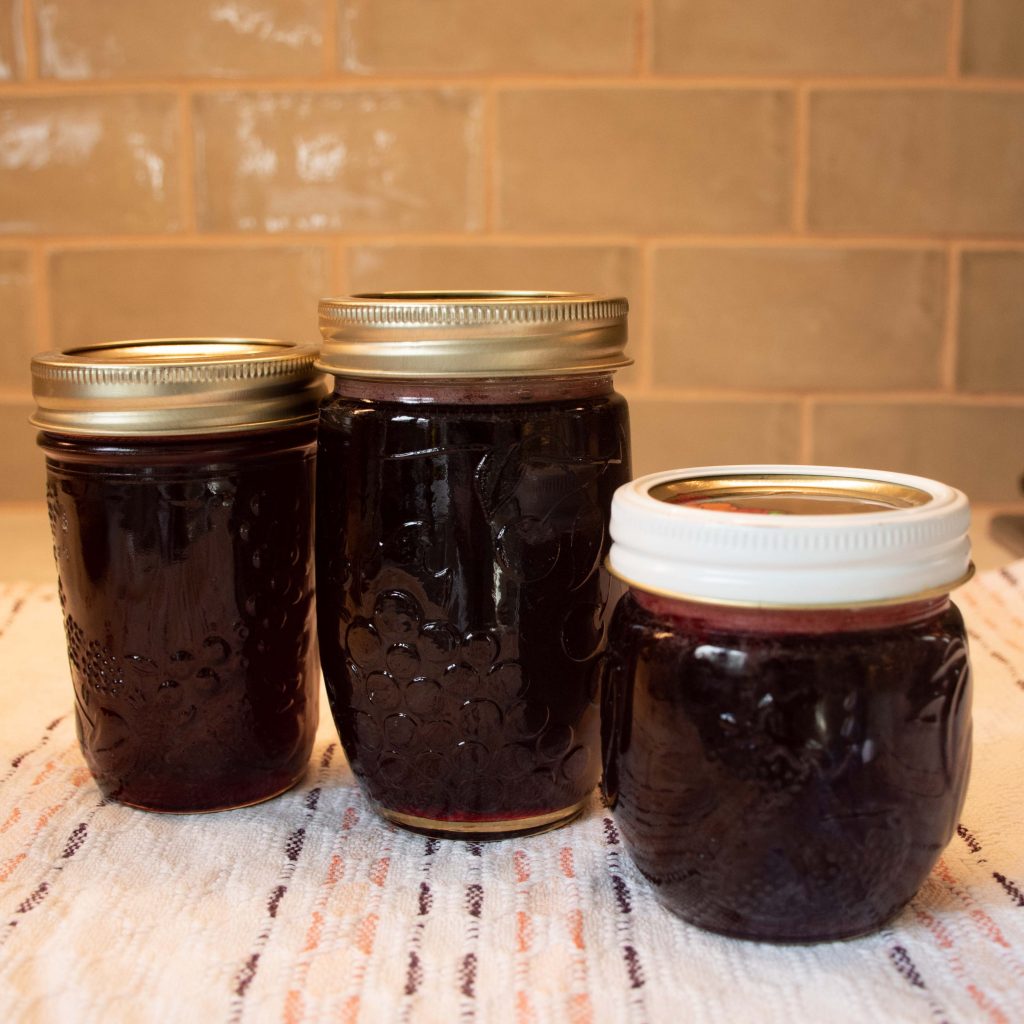
Finally, get creative. Consider mixing fruits to get interesting blends. If your fruit is low in pectin, add crab apples. If the fruit is not very acidic, add lemon juice. Consult some old recipe books for the blends that our grandmothers used to make.